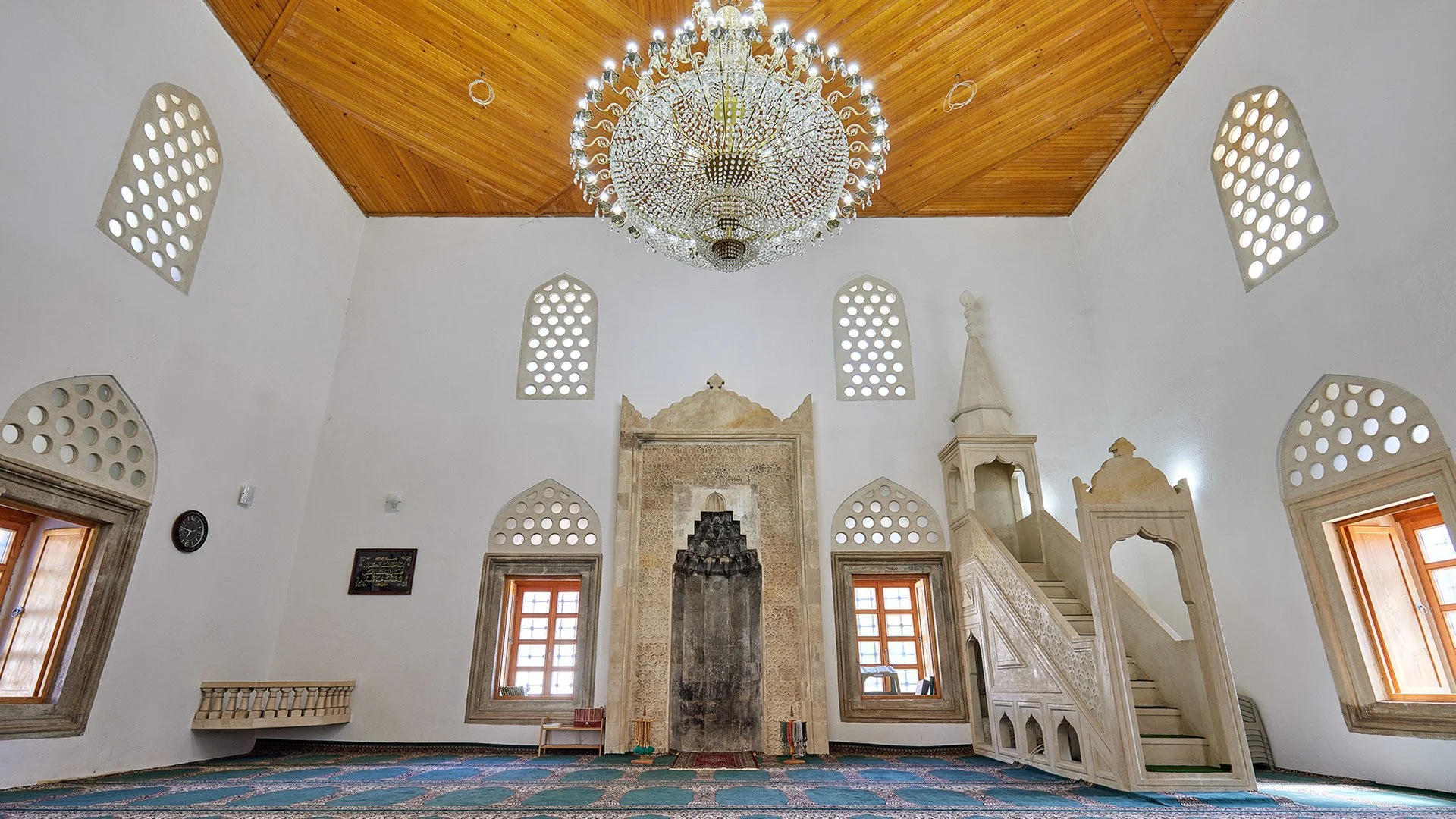
ATIK ALI-PASHA’S MOSQUE / MUSLUK MOSQUE IN FOČA
NATIONAL MONUMENT OF BOSNIA AND HERZEGOVINA
Author: Ekrem Tucaković, PhD, Riyasat of the Islamic Community in Bosnia and Herzegovina
Photo & video: Mirza Hasanefendić
Architectural ensemble of the Musluk (Atik Ali-pasha) Mosque with the cemetery and nišans (Islamic tombstones) in Foča was designated as a national monument of Bosnia and Herzegovina in 2007.
The architectural ensemble is located in the northern part of the town, in the neighborhood known as Donje Polje, below the mouth of the river Ćehotina.
The mosque was commissioned by Atik Ali-pasha, a military leader who lived in Constantinople, and it belongs to very valuable sacral monuments in Bosnia and Herzegovina from the Ottoman period. Judging by the rich decoration, its similarity to the Aladža Mosque is visible and it is therefore assumed that it was built by neimar Sinan.
The Musluk Mosque was built in 1564, as recorded by the surviving inscription on the tin plate above the entrance. The background of the inscription is painted green, and the letters with a gilded paint. The walls of the mosque are adorned with inscriptions from the Qur'an reading.
In terms of layout, the mosque belongs to the group of single-space mosques. Its praying space is covered with a hipped roof, which also covers the portico with exterior sofas and a stone minaret. The sofas are found on both sides of the entrance portal. The mosque measures 11.94 x 12.76 m on the outside. The building has 16 windows in all.
The portal of the mosque is massive, built of stone, with a prominent tall rectangular frame. The mihrab is also massive and made of stone, and the upper part of the mihrab niche has stone motifs of carved decoration, the so-called mukarnases (stalactites) The entire surface of the mihrab around the niche is filled with a dense floral bas-relief. The mimber is made of stone and has elaborate carved decoration. The outside of the mimber railing, as well as the triangular side sections are decorated with bas-relief geometric and floral designs. The mahfil is made of stone and decorated. The minaret of the Musluk Mosque is made of stone, is slender and 31.5 m high.
The cemetery by the Musluk (Atik Ali-pasha) Mosque is spacious. It is surrounded by concrete wall of recent date. It contains several nišans, the most valuable of which is that of Ibrahim, son of Husejin, from 1546, which indicates that burials were conducted here from the time the mosque was built. It has a pleated, folded turban with a rose carved on it. Only few nišans have been preserved up to this day.
The Musluk Fountain by the Ali-pasha Mosque is one of the better-known features of its kind in Foča. It was presumably commissioned by the founder of the mosque, and the mosque was named after it. The fountain was badly damaged during the Second World War but it was repaired in 1970. It was built for the needs of the mosque and the local residents alike.
During the Second World War Italian troops turned the mosque into a military chapel, and the stone mimber was destroyed.
Members of the Army of Republika Srpska completely devastated the mosque in 1992. All that remained were the four outside walls to the roof height. The hipped roof, with its wooden structure, and the portico of the mosque were set on fire and completely destroyed. The minaret was destroyed by dynamiting.
Renewal of the Musluk Mosque in Foča was completed in 2007.
References:
Commission to Preserve National Monuments of Bosnia and Herzegovina:
http://old.kons.gov.ba/main.php?mod=spomenici&extra=Odluke&action=view&lang=1&id=2999



























